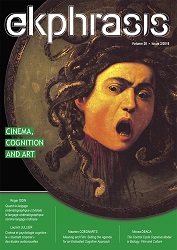Matters of Time in László Krasznahorkai’s and Béla Tarr’s ”Satantango”
Matters of Time in László Krasznahorkai’s and Béla Tarr’s ”Satantango”
Author(s): Alexandra IrimiaSubject(s): Fine Arts / Performing Arts
Published by: Universitatea Babeş-Bolyai, Facultatea de Teatru si Televiziune
Keywords: time-image; intermediality; adaptation; Satantango; Laszlo Krasznahorkai; Gilles Deleuze
Summary/Abstract: This paper attempts to draw an intermedial comparison of László Krasznahorkai’s 1985 novel Satantango and Béla Tarr’s 1994 eponymous adaptation through the perspective of their treatment of time and narration, by reflecting upon the specificities of their respective media. The two works advance the hypothesis of a circular experience of temporality defying the linear flow of literary and cinematic discourse. Aesthetically, their approach is characterized by a strong emphasis on seemingly meaningless and bleak contingency, in an atmosphere of claustrophobic closure shaped by the dance metaphor already transparent from the title, which is also central to the structure of both the novel and its cinematic adaptation. In exploring the various cinematographic and typographic mechanisms through which the tango sequence of steps configures the imagery and the sensorial landscape of the two works, our analysis refers to a multi-modal, comparative usage of key concepts such as narrated time, narrative time and Gilles Deleuze’s time-image.
Journal: Ekphrasis. Images, Cinema, Theory, Media
- Issue Year: 20/2018
- Issue No: 2
- Page Range: 213-225
- Page Count: 12
- Language: English

